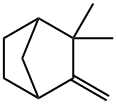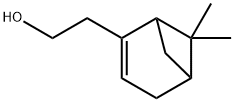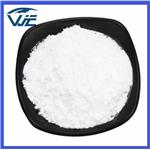
Camphene
- Product NameCamphene
- CAS79-92-5
- CBNumberCB9303627
- MFC10H16
- MW136.23
- EINECS201-234-8
- MDL NumberMFCD00066603
- MOL File79-92-5.mol
- MSDS FileSDS
Chemical Properties
| Melting point | 48-52 °C (lit.) |
| Boiling point | 159-160 °C (lit.) |
| Density | 0.85 g/mL at 25 °C (lit.) |
| vapor pressure | 3.99 hPa (20 °C) |
| refractive index | 1.4551 |
| FEMA | 2229 | CAMPHENE |
| Flash point | 94 °F |
| storage temp. | 2-8°C |
| solubility | 0.0042g/l |
| form | Crystalline Low Melting Solid |
| color | White |
| Specific Gravity | 0.85 |
| PH | 5.5 (H2O, 22℃)(saturated aqueous solution) |
| Odor | at 10.00 % in dipropylene glycol. woody herbal fir needle camphor terpenic |
| Odor Type | woody |
| Odor Threshold | 0.88ppm |
| biological source | synthetic |
| Water Solubility | practically insoluble |
Safety
| Symbol(GHS) |
  
|
|||||||||
| Signal word | Danger | |||||||||
| Hazard statements | H228-H319-H410 | |||||||||
| Precautionary statements | P210-P240-P241-P264-P273-P305+P351+P338 | |||||||||
| Hazard Codes | F,N | |||||||||
| Risk Statements | 11-10-50/53-36 | |||||||||
| Safety Statements | 16-33-61-60-26 | |||||||||
| RIDADR | UN 1325 4.1/PG 2 | |||||||||
| WGK Germany | 2 | |||||||||
| RTECS | EX1055000 | |||||||||
| Autoignition Temperature | 265 °C | |||||||||
| HS Code | 2902 19 00 | |||||||||
| HazardClass | 4.1 | |||||||||
| PackingGroup | III | |||||||||
| Hazardous Substances Data | 79-92-5(Hazardous Substances Data) | |||||||||
| NFPA 704: |
|





